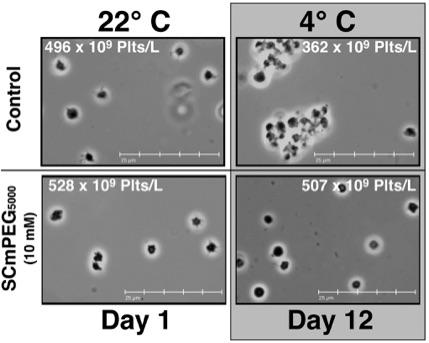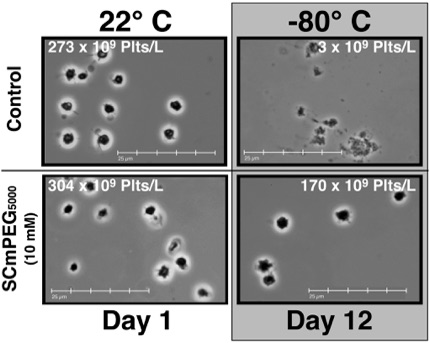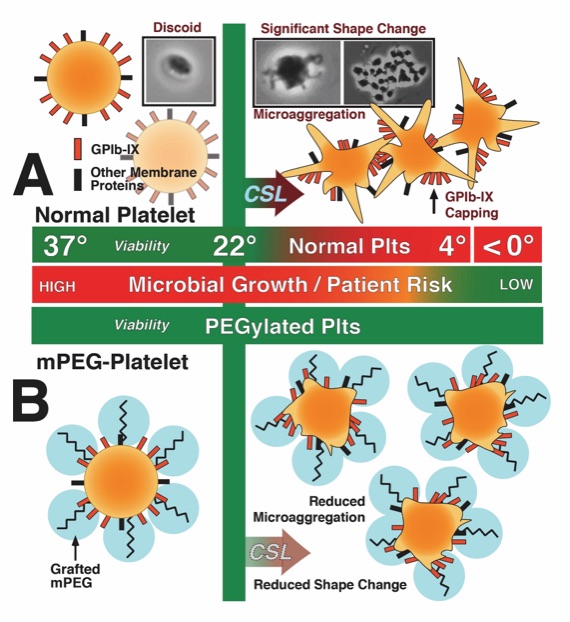Cryoprotection of Platelets By
Polymer Grafting
Cold Storage of PEGylated Platelets at 4° and -80°C


PEGylation inhibited 4°C cold-induced platelets aggregation and shape change. The improved viability of the cells is accompanied by maintenance of the pre-storage platelet count (Day 0).
PEGylation inhibited -80°C cold-induced platelets aggregation and shape change. The improved viability of the cells is accompanied by significantly improved maintenance of the pre-storage platelet count (Day 0).

Consequent to our earlier work on polymer grafting to intact cells (e.g., RBC, lymphocytes), we hypothesized that the polymer induced immunocamouflage of platelet membranes with methoxypoly(ethylene glycol) [mPEG] could prevent or circumvent the immune recognition of cold stored platelets (Panel B). Moreover, because soluble mPEG is a known cryoprotectant, we hypothesized that the grafted polymer might also attenuate other ‘cold-induced’ mechanical and morphological lesions of the 'cold storage lesion' induced by cold temperatures and even freezing of donor platelets.
Scott, M.D., Nakane, N. and Maurer-Spurej, E. Cryoprotection of Platelets by Grafted Polymers. In: Cryopreservation (Editor: Quain, M.), INTECH Book. In press. ISBN: 978-1-83880-206-6 (2019). DOI: in press
Scott, M.D., Nakane, N. and Maurer-Spurej, E. Cryoprotection of Platelets by Grafted Polymers. In: Cryopreservation (Editor: Quain, M.), INTECH Book. In press. ISBN: 978-1-83880-206-6 (2019). DOI: in press
The ability to freeze and recover donor platelets would both greatly increase platelet inventory and potentially expand the use of platelet therapy to geographic locations where platelet therapy is not commonly practiced. Moroever, the cold storage of platelets would significantly reduce the risk of microbial growth within platelet products thus enhancing patient safety.


